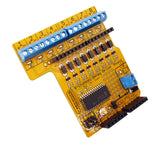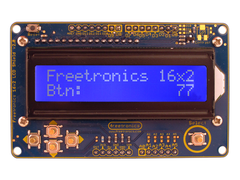When the controller board in their Maytag dishwasher died - instead of forking out for the factory replacement part at over $150, they turned to Arduino to solve the problem. After some analysis and working out the logic of the controls between the controller and the functions, it was simple enough to create the Arduino-based controller. Furthermore they can also create customised wash cycles - for example longer rinse or hot wash times. Interesting stuff. Here's a quick demonstration video:
It just goes to show what you can do with existing commercial applicances - they are often much simpler than we expect. For a full description of the process, click here. And we're on twitter and Google+, so follow us for news and product updates as well.
When working with the dishwasher above, the hacker created their own relay bank. You can control relays in a much easier way using our new RELAY8: 8-channel relay driver shield:

You can drive up to 8 relays from your Arduino using just 2 I/O pins with this shield. It communicates with your board using I2C, so you can even stack several shields together to drive 16, 24, or more outputs! Includes back-EMF protection and works with a wide range of relays. Perfect for home automation projects! For more information and to order, click here.

























